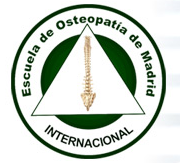by Caroline Markolin, Ph.D.
In February 1979, Dr. med. Ryke Geerd Hamer, at the time head internist at an oncology clinic in Munich, Germany, set out on an extraordinary scientific journey. On the basis that all bodily processes are controlled from the brain, Dr. Hamer began to analyze the brain scans of his cancer patients and compared them with their personal histories. What initiated this new approach was that Dr. Hamer himself had been diagnosed with cancer shortly after the tragic death of his son Dirk in December 1978.
What Dr. Hamer discovered was startling. He found that when we suffer unexpected emotional stress, the ”conflict shock“ impacts an area in the brain that is programmed to deal with exactly the particular type of distress experienced. From over 40,000 case studies, Dr. Hamer established that when the brain receives the impact, which is clearly visible on a brain scan, the organ or tissue that is controlled from the affected brain area also reacts. Depending on the exact nature of the conflict, the organ either responds with cell augmentation, i.e. the growth of a tumor, or with tissue loss.
Let’s take, for example, lung cancer. Our lungs consist of millions of lung alveoli (tiny air sacks) that regulate breathing and, consequently, our body’s oxygen supply. Dr. Hamer found that the type of conflict linked to the alveoli cells is a ”death-fright conflict“ because in biological terms the death panic is equated with an inability to breathe. The moment the death-fright occurs, for example through a cancer diagnosis shock that is associated with a ”death sentence“, the alveoli cells instantly start to multiply, forming a lung tumor. The tumor will continue to grow as long as the death-fright is active. Contrary to the conventional view, the multiplication of lung cells is not a pointless process but serves a very definite biological purpose, namely to improve the capacity of the lungs thereby optimizing the organism’s chance of survival. Dr. Hamer firmly established that a person only develops lung cancer when the brain scan shows a sharp target ring configuration in the corresponding brain area as a result of the impact of an unexpected ”death-fright“.
Since healing can only occur after the conflict has been resolved, GNM focuses on identifying and resolving the original conflict. Above all, it is most important to create an environment free of fear and panic so that the ”patient“ can enter and complete the healing process without the danger of new conflict shocks. During the healing phase, the entire organism undergoes a period of repair and recovery. In the case of lung cancer, the moment the death-fright conflict is resolved, for example through hope and encouragement and most of all through understanding the natural function of the cancer, the tumor stops growing. During the healing phase the tumor is broken down by spelialized that have been trained over the course of evolution to do just that. In the case of lung tissue, tubercular bacteria are activated to decompose the now superfluous cells. The remnants of the tumor are coughed out, therefore the sputum contains tubercular secretion often mixed with blood. This condition is clinically called lung tuberculosis. If these helpful microbes are not available, because of vaccination or excessive use of antibiotics, the tumor encapsulates and stays in place. A routine examination might then reveal the harmless nodules and potentially trigger a new cancer diagnosis shock.
What has been said about the healing process of lung cancer applies, according to Dr. Hamer’s findings, equally to cancers of the esophagus, colon, rectum, kidneys, liver, prostate, uterus or the breast glands – whereby each cancer is biologically linked to a specific type of conflict that Dr. Hamer has identified based on thousands of cases.
While organs that are controlled from the Old Brain (the brain stem and the cerebellum) such as the lungs, the colon, the esophagus, the liver, the kidneys, or the breast glands generate a tumor growth during the conflict-active stress phase, the opposite applies for organs that are directed from the New Brain (the cerebrum) such as the ovaries and testicles, the cervix, the bronchia, the larynx, the bones and the lymph nodes. These organs respond to conflicts with tissue loss as seen, for example, in ovarian or testicular necrosis – and again the tissue alteration occurs not randomly but for a very definite biological reason. The moment the related conflict is resolved, the tissue that was lost through ulceration during the active stress phase is now being refilled and replenished with new cells. Here we find, for example, tumors of the ovaries and testicles, cervical cancer, bronchial or laryngeal carcinoma, lymphoma as well as various types of sarcoma. According to conventional medical standards these cancers are considered to be malignant growths although they are in fact healing tumors, which degrade along with the completion of the healing phase.
GNM offers - for the first time – biological criteria that classify cancerous growths in relation to the natural laws of embryology and evolutionary science. Dr. Hamer’s findings explain why certain body cells sud¬denly start to multiply, why a tumor grows on a particular part of the body, what specific conflict provokes the tumor growth, from what part of the brain the tumor is controlled, and what therapeutic approach is feasible for a specific type of cancer. We learn that a tumor that grows during the healing phase as part of a repair process is of entirely different quality than a tumor that grows during conflict activity as a natural response in the battle of survival. Fixated solely on the cancerous growth and failing to recognize the two phases of very disease, standard medicine interprets cancer as cells running amok which, if not kept in check through Chemo, radiation or surgery will eventually kill the organism. As a result of this dogmatic view, the word ”cancer“ itself has become synonymous with hopelessness, fear and despair.
Based on the natural biological laws that determine the cause, development and healing process of can¬cer, the doctrine of destructive cancer cells can no longer be maintained. Dr. Hamer’s extensive research on cancer shows that the standard classification of tumors as ”benign“ or ”malignant“ becomes redundant. Nature, so we are reminded, doesn’t harbor any malignancy. Nature always works goal-oriented and the ultimate force of Nature is to secure its own survival. Since we, as humans, are part of Nature, which we sometimes seem to forget, Nature always tries to ensure our own survival and that of our off-spring.
© 2006 by Caroline Markolin
Extract from: www.LearningGNM.com
German New Medicine
Go to Content










 Master PCMH Criteria with Upcoming Webinars
Master PCMH Criteria with Upcoming Webinars







 The American Osteopathic Association (AOA) is the representative organization for the over 70,000 osteopathic physicians (DOs) and 18,000 osteopathic medical students in the United States. The organization promotes public health, encourages scientific research, serves as the primary certifying body...
The American Osteopathic Association (AOA) is the representative organization for the over 70,000 osteopathic physicians (DOs) and 18,000 osteopathic medical students in the United States. The organization promotes public health, encourages scientific research, serves as the primary certifying body...










 9:49
9:49
 Daniel Enriquez de Guevara
Daniel Enriquez de Guevara













.jpg)


















0 comentarios:
Publicar un comentario